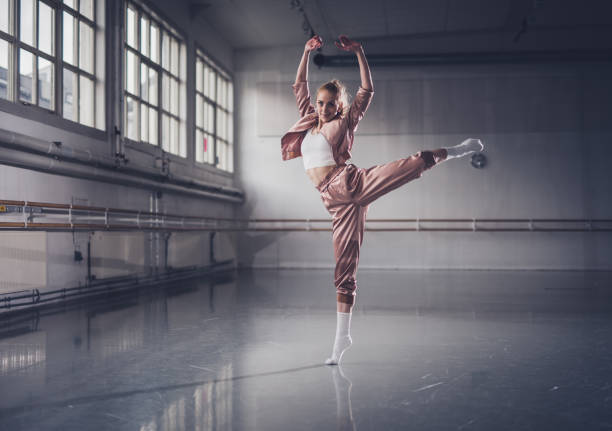Beginner-to-Advanced Movement Techniques for Every Age
Movement practice can be adapted to any age or ability by focusing on progressive technique, musicality, and safe conditioning. This article outlines practical approaches from rhythm training to partnering skills, showing how choreography, improvisation, and style-specific work like ballet, salsa, and hiphop can fit into classes for youth, adults, and seniors. Insights aim to help students and instructors plan structured, age-appropriate sessions and develop durable performance abilities.

Movement offers a lifelong pathway for expression, fitness, and social connection. For learners at different stages, clear structure and adaptable goals make progress steady and rewarding. This article presents a sequence of approaches—starting with basic rhythm and musicality and moving through choreography, technique, conditioning, styles, improvisation, and partnering—so instructors and students can build classes that respect age-related needs while advancing movement ability and performance readiness.
Rhythm and musicality
Rhythm and musicality form the foundation of most movement practices. For beginners, simple beat-counting, clapping exercises, and walking to a pulse help internalize timing. Intermediate students benefit from syncopation drills and phrasing exercises that link movement accents to musical cues. Advanced learners explore polyrhythms and dynamic contrast to refine expressive choices. Across ages, adapting tempo, volume, and complexity supports cognitive engagement and coordination: slower tempos and clear verbal cues work well for older adults, while quicker patterns can challenge younger bodies.
Choreography and movement design
Choreography teaches structure, spatial awareness, and creative problem solving. In early stages, short sequences (8–16 counts) with repeated motifs help memory and confidence. Mid-level classes introduce transitions, levels, and motif development so students learn to manipulate phrase length and contrast. Advanced composition explores layering, counterpoint, and narrative through movement. When designing choreography for varied ages, consider movement range, transitional pacing, and cognitive load—simpler spatial paths and fewer rapid changes benefit learners who need extra processing time or mobility accommodations.
Technique and conditioning
Technique and conditioning are interdependent: strength and alignment support cleaner movement, while technical drills protect the body. Foundational technique includes posture, joint articulation, alignment, and basic locomotor patterns. Conditioning routines—targeted strength, flexibility, and cardiovascular work—should be age-appropriate and progress gradually. For older adults, prioritize balance, core stability, and low-impact endurance; younger or advanced students can incorporate plyometrics and sport-specific conditioning. Regular warm-ups, progressive overload principles, and recovery strategies reduce injury risk and help technique improvements transfer to performance.
Ballet, salsa, hiphop styles
Style-specific training sharpens genre vocabulary while reinforcing transferable skills. Ballet emphasizes turnout, alignment, and controlled extension, which can enhance overall posture and technique. Salsa focuses on timing, partner connection, and syncopated footwork useful for social dancing. Hiphop develops grounded weight shifts, isolations, and improvisational phrasing. A balanced program introduces elements from each style in age-appropriate ways—short barre or alignment exercises for younger students, simplified salsa patterns for social engagement, and rhythm-driven hiphop combos for dynamic cardio and self-expression.
Improvisation and performance skills
Improvisation supports creativity, presence, and quick decision-making. Guided improvisation prompts—using texture, speed, level, or emotional tone—encourage safe risk-taking and exploration. For performance skills, rehearsed solo and group work should gradually integrate technical content with expressive intent: focus on projection, intention, and clarity of shape. Older learners often benefit from structured cues and repetition to build confidence, while younger learners can explore playful, game-like improvisation. Regular opportunities to perform inform rehearsal priorities and build resilient stage habits.
Partnering and performance
Partnering trains trust, spatial awareness, and timing. Basic weight-sharing, lead-follow principles, and clear communication protocols should precede lifts or complex contact work. Age considerations matter: prioritize safety, gradual progressions, and matched strength levels when introducing partnering drills. Performance preparation pairs technical runs with run-throughs that simulate stage conditions—costume considerations, entrance patterns, and pacing. Across levels, emphasizing cueing language, mutual responsibility, and partner conditioning improves both safety and artistic outcome.
Conclusion A thoughtfully structured program progresses from rhythm and musicality through choreography, technique, conditioning, style work, improvisation, and partnering, with adaptations for age, ability, and learning goals. Clear sequencing, consistent warm-ups, and attention to pacing help learners of any age build skill sustainably. Incorporating varied modalities—genre work, creative tasks, and performance simulation—keeps classes engaging while developing both technical proficiency and expressive range. Local services and instructors can tailor these elements to community needs and accessibility levels.






